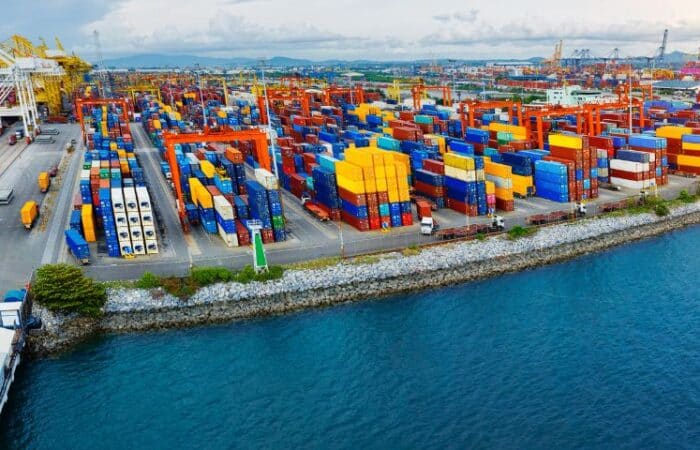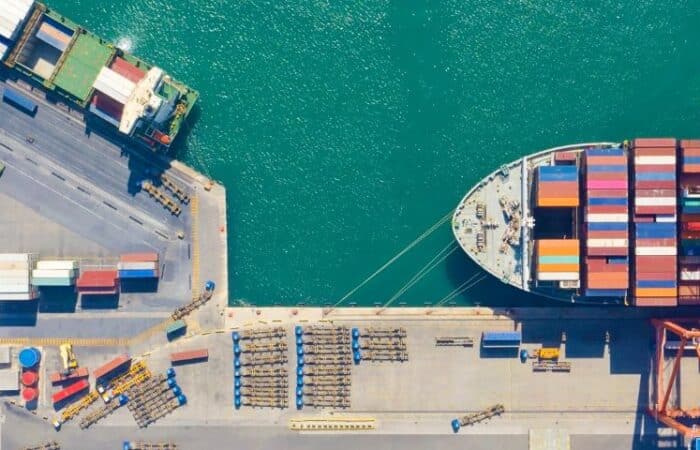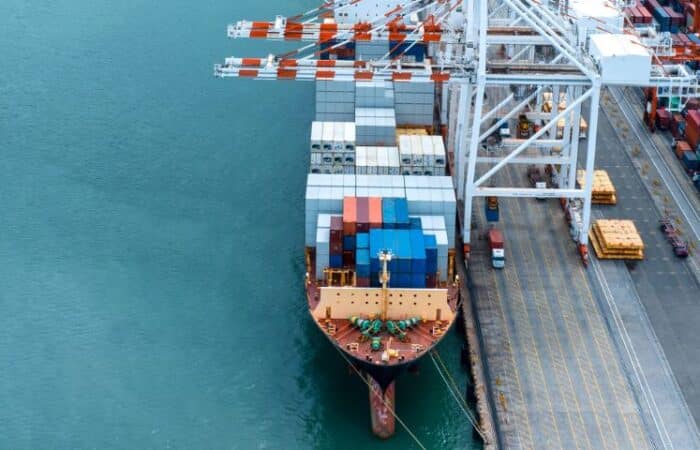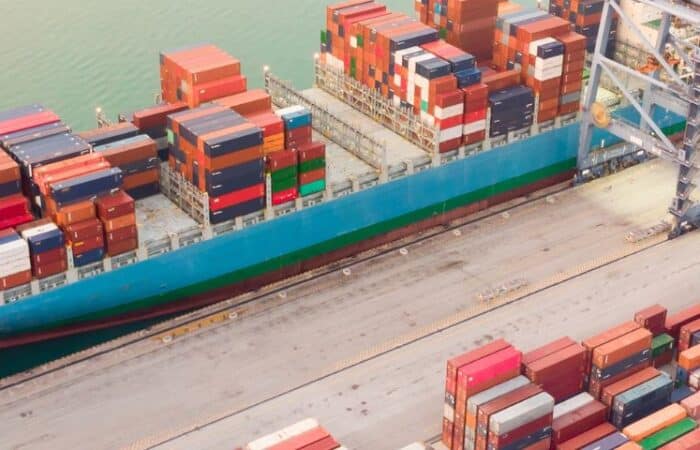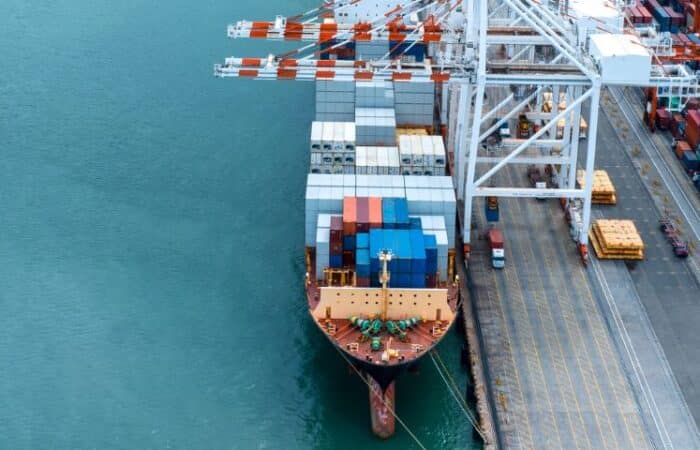Transportation Management System (TMS)
What is a Transportation Management System (TMS)?
A transportation management system (TMS) is a comprehensive software solution designed to streamline and optimize the many aspects of managing transportation and logistics operations. It serves as a centralized platform that facilitates the planning, execution, and monitoring of the entire transportation process, offering end-to-end visibility and control.
Key Features of a TMS
A maritime TMS encompasses a range of features crucial for effective management and optimization of maritime transportation operations. Some key features include:
- Voyage planning and optimization: TMS typically include tools for planning optimal routes, considering factors such as weather conditions, sea currents, fuel consumption, and vessel speed. It aids in maximizing efficiency and minimizing voyage duration, while ensuring safety and compliance.
- Fleet management: TMS provide functionalities for monitoring and managing fleets of vessels. They can track vessel locations, manage schedules, maintain vessel health through predictive maintenance, and optimize resource allocation.
- Cargo and container tracking: this feature enables real-time tracking, ensuring visibility throughout the supply chain. It helps transit times, optimize loading/unloading processes, and enhance security by monitoring cargo movements.
- Port management and operations: TMS facilitates efficient port operations by managing berth allocations, handling port-related documentation, coordinating with port authorities, and streamlining the vessel docking and departure processes.
- Compliance and regulatory support: this includes tools for ensuring compliance with maritime regulations, safety standards, and environmental protocols. TMS helps in managing documentation, certifications, and reporting to regulatory bodies.
- Risk management and safety: TMS often incorporate features for assessing and mitigating risks, such as weather alerts, route deviation planning for avoiding hazardous areas, and monitoring safety protocols on vessels.
- Integration and data analytics: integration capabilities with other systems (like ERP systems or ocean freight visibility platforms) enable seamless data flow for better decision-making. Advanced analytics tools within TMS provide insights into operational performance, fuel consumption patterns, and predictive maintenance needs.
Who Uses a Transportation Management System?
TMS are used in different ways by maritime shipping stakeholders. Shipping companies manage and optimize the movement of goods during shipping, while freight forwarders use TMS to help them coordinate shipments, choose optimal routes, and ensure the timely delivery of their merchandise. Transportation management systems are also used by logistics providers to enhance overall supply chain efficiency, and by manufacturers and distributors who can reduce costs and streamline transportation processes.

The Role of TMS in the Supply Chain
TMS are essential in today’s supply chain operations. The visibility they provide allows stakeholders to proactively resolve shipping issues and update customers with accurate shipping status information.
TMS automate a number of processes, reducing manual work and errors. They also improve workflows, from order management to freight audit and payment, for smoother operations and faster decision-making. They manage documentation and assist in collaboration and communication between the different parties involved in shipping.
TMS systems provide shippers with data needed to evaluate the performance of shippers. Some key performance indicators driven by TMS data are:
- On-time performance: indicates the reliability and punctuality of maritime transportation services
- Vessel utilization rate: measures the percentage of vessel’s capacity used for cargo transportation, while optimizing resource allocation and reducing empty space on vessels
- Port turnaround time: tracks duration from arrival at port to departure, including all port-related processes
- Fuel consumption per voyage: assesses fuel efficiency and environmental impact
These KPIs help maritime transportation managers and stakeholders gauge performance, identify areas for improvement, optimize operations, and make data-driven decisions to enhance the overall efficiency and effectiveness of maritime transportation management systems.
TMS Cost Considerations
While the benefits of a TMS are substantial, implementation of a transportation management system involves considerable investment. Implementation requires initial setup expenses, including software installation, training, and integration with existing systems. Organizations should also take into account the costs associated with ongoing maintenance, updates, and potential customization.
These costs are often outweighed by the long-term savings generated through enhanced efficiency, reduced transit times, and improved resource utilization. TMS should be viewed as a strategic investment with the potential for a significant return on investment generated through supply chain optimization.
Organizations looking to reduce the costs of deploying a TMS should consider integrating the system via API into an Ocean Freight Visibility platform. This integration extends the benefits generated by the TMS by enhancing actionable visibility into ocean freight cargo.
Enriching TMS with Maritime AI™
In today’s volatile supply chain climate, we are seeing an increasing number of TMS and supply chain management (SCM) companies stepping up to make their systems more efficient and competitive in line with customers’ expectations, to have the benefits of AI included in their systems.
Think about bridges and tunnels…with Windward’s platform integrated into the system, everything becomes interconnected and an organization’s personnel don’t have to waste time working with multiple systems or synching data.
Windward makes critical data, and more importantly, insights, available at the right time, in the right place, in the right format, regardless of the system you are using. This creates greater efficiency and frees up people to focus on time-sensitive tasks.
The London Stock Exchange Group (LSEG) selected Windward’s Maritime AI™-powered technology to augment its existing shipping analytics capabilities available on the LSEG Workspace platform in real-time.
Amital Data – a leading company offering software solutions for freight forwarders, shipping agents, customers brokers, importers, and exporters – has integrated the Windward Ocean Freight Visibility solution into Unifreight, the company’s SCM system, for improved cargo visibility.
Let’s see who will be next…















